April 20, 2025
Letters from Indochina (Part 21)
By Simon J. Lau
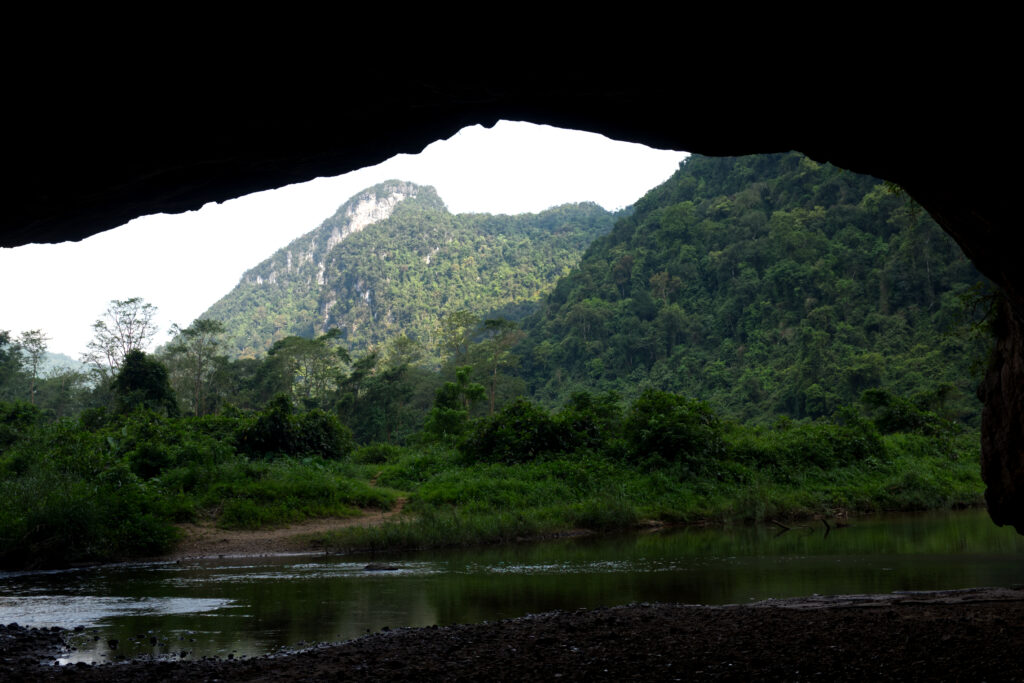
I made the long trek into Hang En today. To book this cave tour, the sales consultant asked me a whole series of questions about my activity level — and even requested “full body pictures” of myself. I couldn’t help but joke that it sounded more like a dating service than a trekking tour (and if so, my wife definitely wouldn’t be too happy). 😅 She reassured me it was strictly to assess my fitness. This trek isn’t for the faint of heart: it’s long, hot, and demanding.
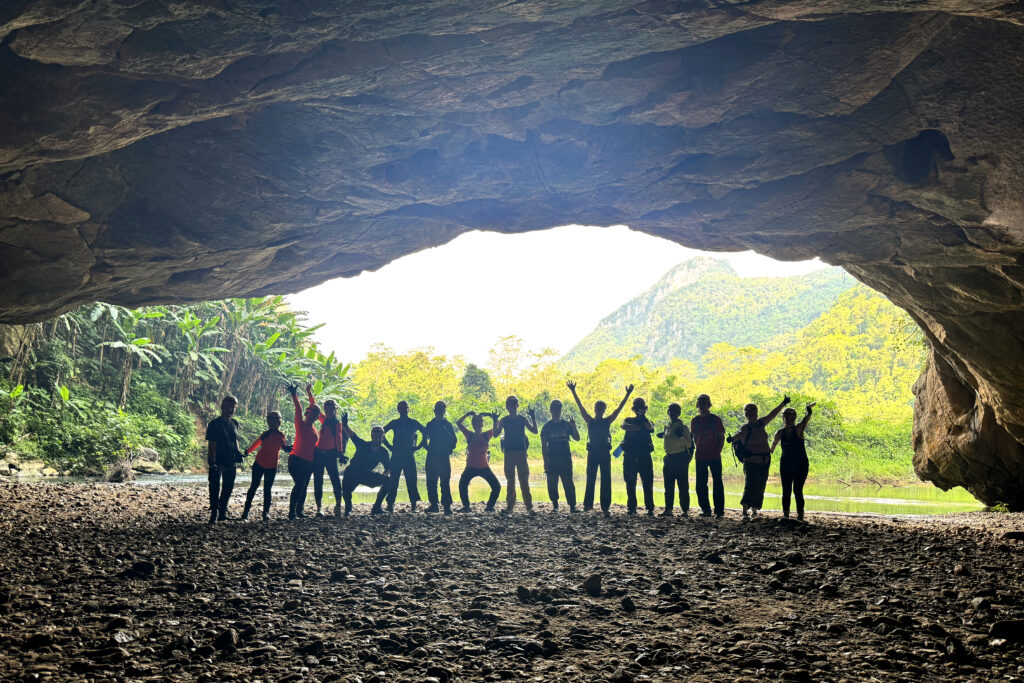
There were 16 people in my group today, mostly Europeans, a few Vietnamese (and overseas Vietnamese), two Israelis, and just one other American. As luck would have it, the other American happened to be a fitness instructor and former college athlete. She may be the fittest person in the group — aside from our Vietnamese guides and porters, of course. They might not look it at first glance, but they punch far above their weight when it comes to strength and endurance. Luckily, I managed not to embarrass America — at least not yet — and made it to camp today in one piece. 🇺🇸
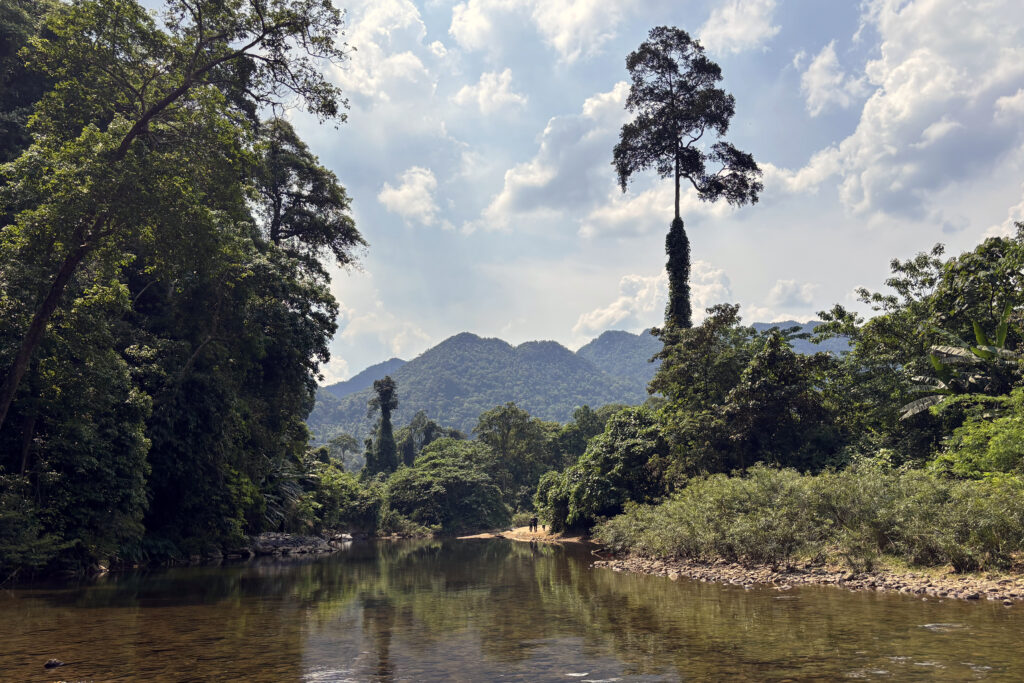
The first 1–2 hours were spent hiking down a mountain trail through the jungle. When we reached the valley floor, it required multiple river crossings. Thankfully, it’s dry season, so many of the areas that would normally be underwater were mostly dry today when we visited. The wet season typically begins around May and lasts through October, turning these rivers into fast-moving streams and making the trek much more challenging.
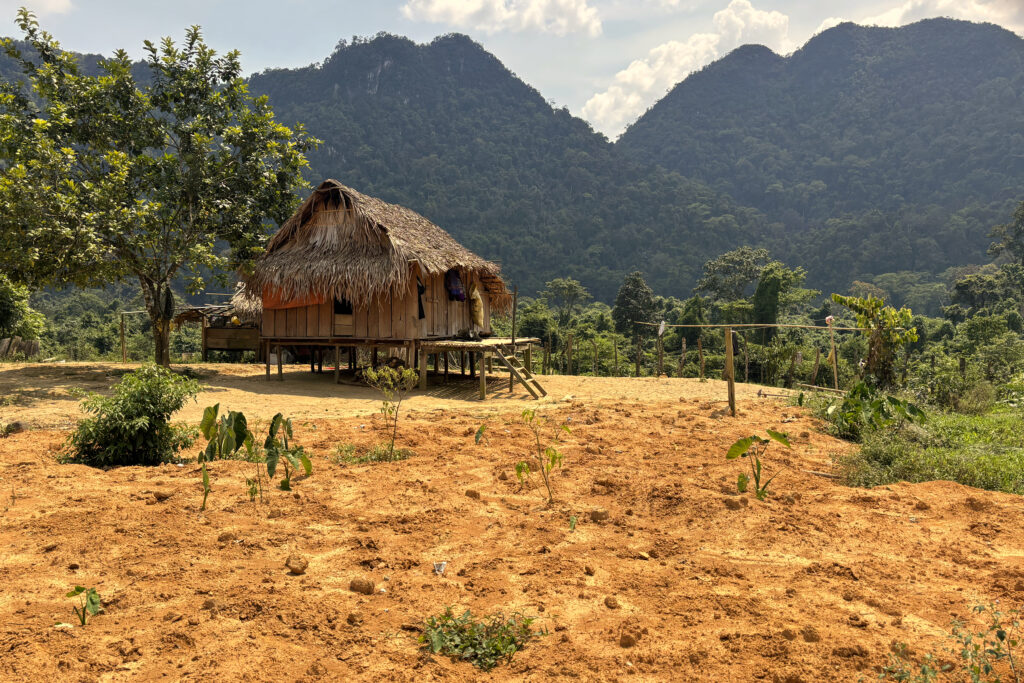
We eventually reached Doong Village, a small settlement tucked in a lush valley. The village is home to members of the Bru–Van Kieu ethnic minority, who have lived in this remote region for generations, relying on farming and forest gathering for their livelihoods.
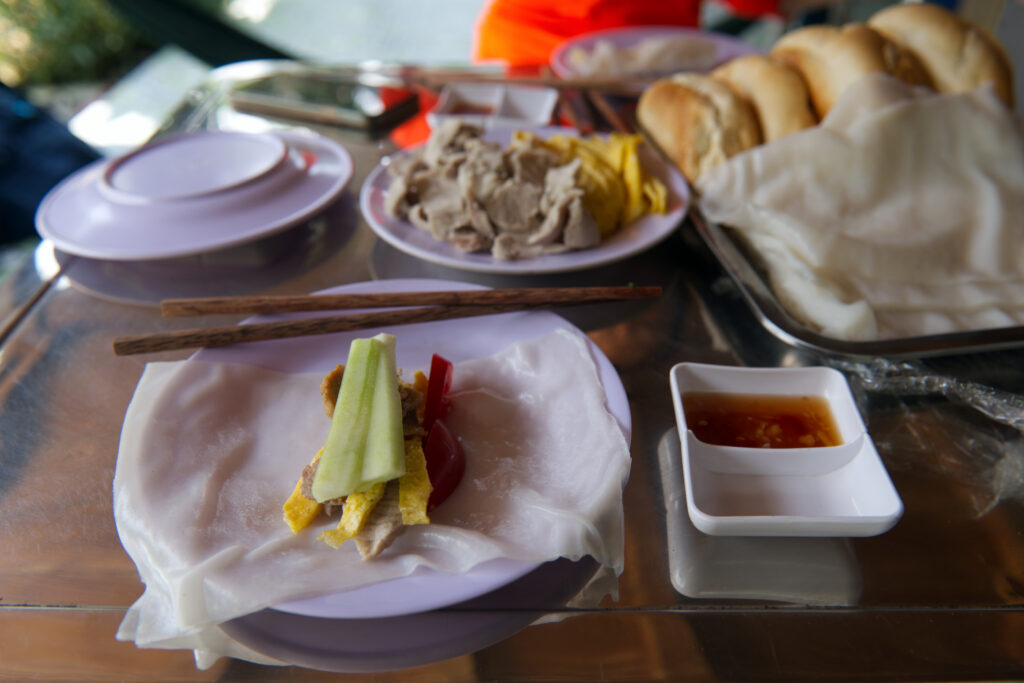
There, we had a simple but refreshing lunch: thin rice papers for wrapping slices of pork and fresh vegetables, plus a few pieces of baguette for good measure. By then it was just past noon — the hottest part of the day — so we rested for about an hour before setting out again.
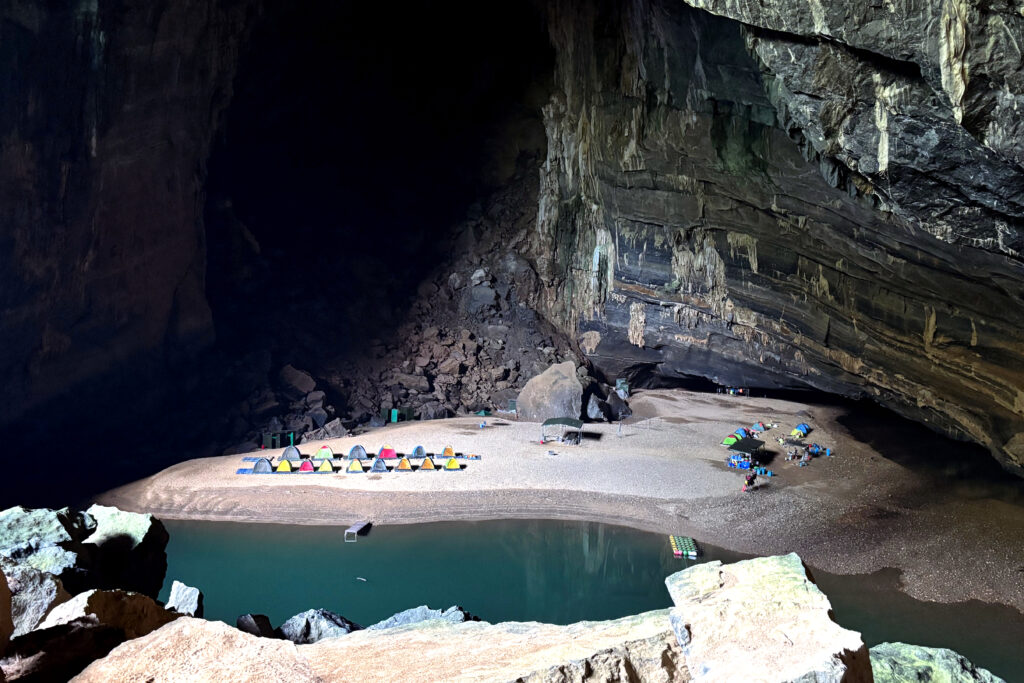
The next three hours were tougher. We kept crossing rocky riverbeds, but mostly trudged through wide open spaces with the sun beating down on us. Eventually, we reached one of the three gaping mouths of Hang En.
Before it was “discovered” by the outside world, the cave had been used by local communities as shelter during monsoons and as a storage spot for supplies while traveling through the jungle. My guide also shared a story: in the past, young boys were required to climb the cave walls to collect bird eggs from the ceiling as a rite of passage into adulthood — a vivid reminder of just how important, and dangerous, this place once was for the people who lived here.
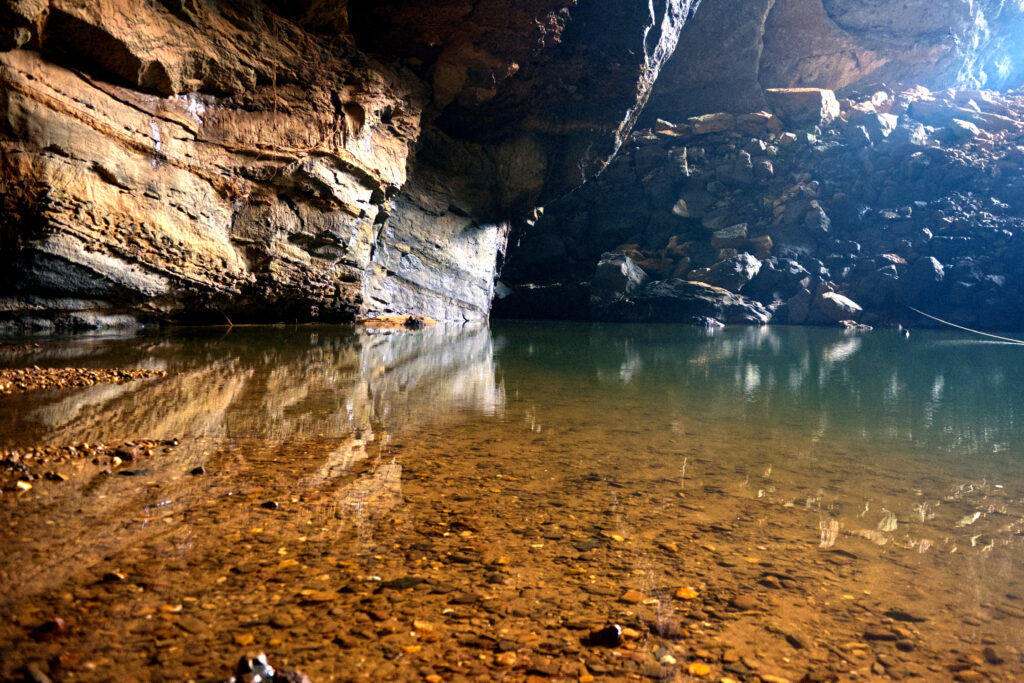
Our campsite was set up near a beautiful inlet inside the cave — formed by a still section of the river pooling at the entrance. By the time we arrived, I was exhausted and more than ready for a swim. I changed into my swimsuit and was one of the first to jump in. The water was deceptively deep: at its deepest points, no one could touch the bottom, no matter how hard they tried. It wasn’t crystal clear either, which made some of us hesitate about diving too deep — maybe out of fear of what we couldn’t see below?
What made the swim even more surreal was how the water temperature kept shifting. Most of it was warm, but every so often, you’d drift into a sudden pocket of cold — or feel cool streams bubbling up from below if you treaded water in one spot long enough. I have no idea why it happened, but it added just enough mystery to keep most of us a little cautious.
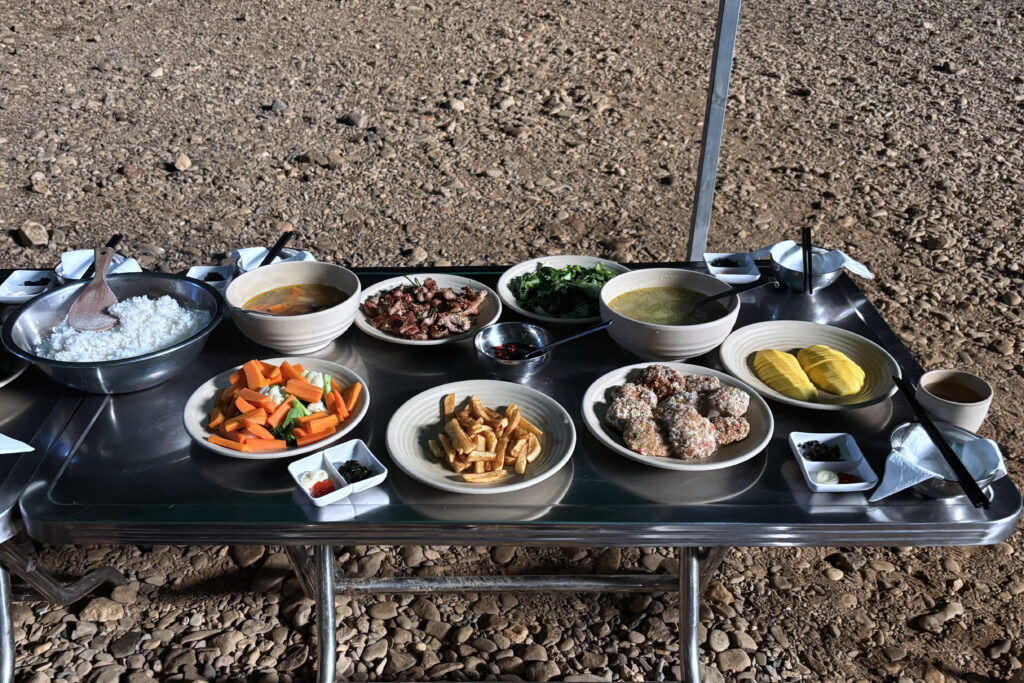
Dinner that night was a reminder that although we were technically “camping,” it felt a lot closer to glamping. Sixteen porters had hiked ahead to set up our tents, a full kitchen, and even a makeshift bathroom area. The meal itself was simple but hearty — French fries, stir-fried bok choy, grilled chicken, and more — almost like eating at a local restaurant.
Tomorrow, we continue deeper into Hang En. More to come!

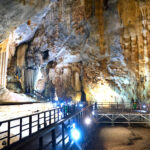
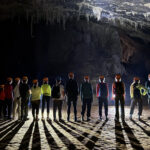

Comments are closed.